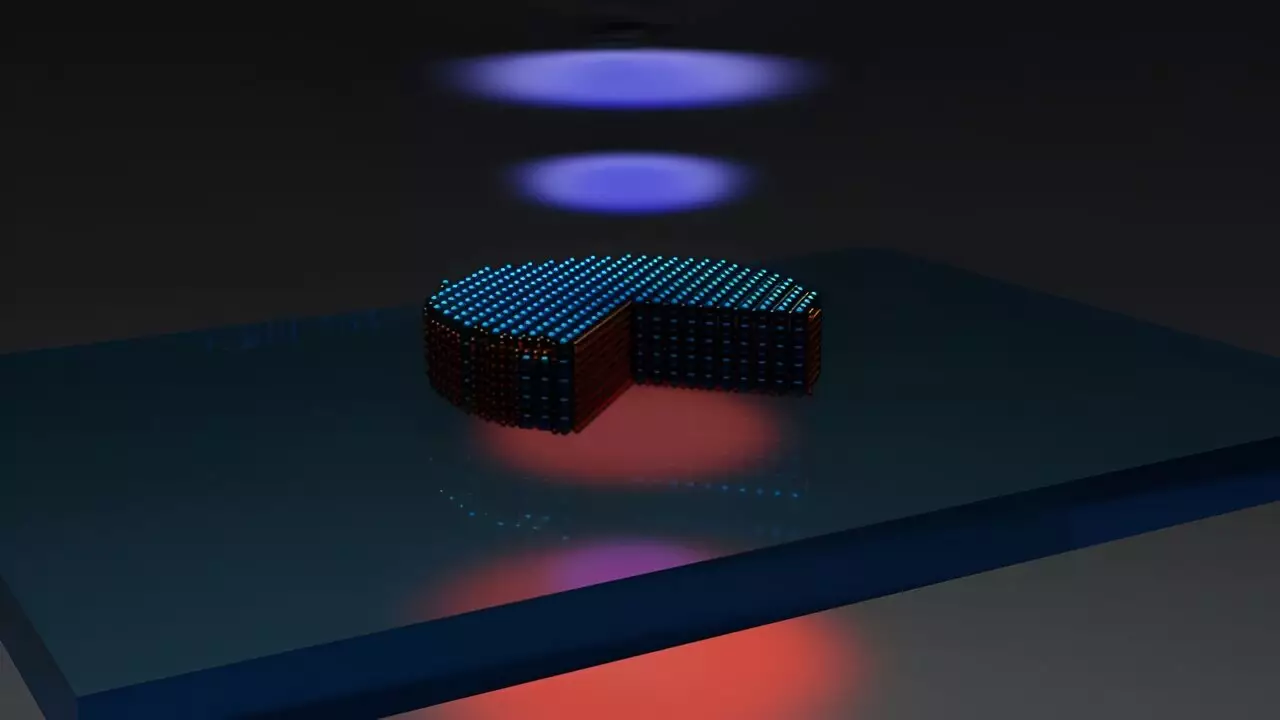Photonics, the science of generating, manipulating, and detecting light, has drastically transformed numerous industries, ranging from telecommunications to medicine. Harnessing light-matter interactions, researchers have unlocked pathways for innovations that were once deemed impossible. With applications in lasers and quantum technologies, the evolution of photonic applications serves as a testament to the potential of this field. However, the continued development of more efficient materials and structures remains critical in capitalizing on light’s unique properties.
Breakthroughs at Chalmers University
Recent research conducted at Chalmers University of Technology shines a spotlight on a remarkable breakthrough in nanophotonics. By successfully merging two pivotal areas—nonlinear optics and high-index nanophotonics—the team has introduced a novel disk-like structure at the nanoscale. This groundbreaking work has the ability to revolutionize the field due to its heightened efficiency in light frequency conversion. Research lead Dr. Georgii Zograf expressed joy over the achievement, noting its extraordinary efficiency—more than 10,000 times that of similar unstructured materials.
The discovery centers around the transformation of light frequencies via nonlinear optical resonances in a crafted nanodisk. Notably, the research team employed molybdenum disulfide, a transition metal dichalcogenide (TMD) known for its exceptional optical properties, particularly at room temperature. This thin material, however, typically suffers from challenges associated with stacking layers without impairing their nonlinear attributes, primarily due to constraints imposed by crystalline symmetry.
Innovative Fabrication Techniques
In a remarkable first, the researchers developed a nanodisk made from stacked molybdenum disulfide that preserves the broken inverse symmetry crucial to maintaining optical nonlinearity. This preservation promises to enhance the unique nonlinear effects associated with each individual layer of the material. Zograf underscores the significance of this achievement, which not only retains but amplifies the material’s optical characteristics.
Furthermore, the high refractive index of molybdenum disulfide allows for more effective light localization within the medium, significantly boosting the potential for applications such as second-harmonic generation—a nonlinear optical phenomenon that could transform laser technologies. The researchers’ innovative approach establishes an efficient mechanism for compressing light and fostering the doubling of frequencies, drawing parallels with established practices used in high-energy laser systems.
One of the most astonishing aspects of this research is the size of the nanodisk, measuring just 50 nanometers. As Professor Timur Shegai points out, this is a staggering reduction in scale, especially when compared to conventional platforms utilized for nonlinear optics, which usually operate at the centimeter-scale. The miniaturization achieved here marks a significant milestone in nanotechnology, particularly in light of the reproducibility of such structures.
The implications could be profound: beyond simply advancing research, the unique characteristics of TMD materials paves the way for an array of advanced optical implementations. High-index nonlinear materials hold promise for a plethora of applications that align with the burgeoning field of quantum optics, particularly in the realms of optical circuits and photonic miniaturization.
The researchers envision a future where these nanodisks can be seamlessly integrated into various optical systems, contributing to breakthroughs in both classical and quantum nonlinear optics. By harnessing the unparalleled properties of the nanodisk, significant reductions in the dimensions of optical devices prevalent in today’s technologies may soon be realized.
The miniature size and enhanced efficiency of these structures could fundamentally reshape our approach to generating entangled photon pairs and designing metasurfaces. While Zograf and Shegai acknowledge that this is merely the beginning, the initial success serves as an important stepping stone for further explorations into nonlinear nanophotonics.
The research conducted at Chalmers University of Technology heralds a new era in the field of nanophotonics. The introduction of an intricate disk-like nanostructure capable of enhancing nonlinear optical properties is a significant leap forward. As researchers continue to explore these avenues, we may soon see the fruits of their labor being translated into tangible advancements, paving the way for more efficient, compact optical applications that leverage the power of light in extraordinary ways. The future of photonics is bright, and the exploration of these innovative materials promises a new frontier for both the scientific community and industry at large.


Leave a Reply